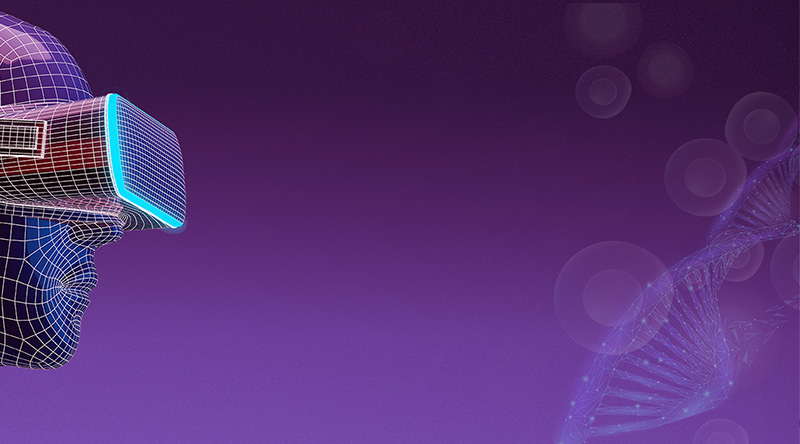Virtual and augmented reality tools have reached a level of maturity to be utilised across various industries. In this article, Ben Hargreaves asks whether there is particular potential for the technologies to revolutionise staff training and reduce costs in pharma manufacturing.
Virtual reality (VR) and augmented reality (AR) have spent a lot of time in the headlines recently. With major companies investing in the concept of the ‘metaverse’, such as Facebook’s rebranding to Meta, both of these technologies will prove crucial to the adoption and potential success of this concept.
VR and AR differ in that the latter can add digital elements to reality while the former is a completely immersive, simulated experience. What this represents in practice is the ability to use a smartphone camera, or another compatible device, to see AR digital augmentation added to the real world, while VR is currently enabled through the wearing of a headset and connected devices.
The interest in such technology for various industries is the ability to train employees and work on the design of objects without the typical expense associated with such activities. As the cost of AR and VR tools have become progressively cheaper and the technology has become increasingly sophisticated, they can now be employed in various environments and industries.
The pharma industry’s overall push into industry 4.0 for manufacturing, with the aim of streamlining and enabling greater automation through adoption of digital tools, is leading to greater interest in the potential for VR and AR to improve efficiency and reduce costs in production.
The importance of manufacturing
The efforts underway to strengthen the manufacturing process across the industry have become more important than ever, as the therapies the industry is developing increase in complexity. Brian Duncan, chief operating officer of QxP, which provides the Virtuousi VR tool enabling pharma companies to train staff on manufacturing treatments, told pharmaphorum that VR is part of a longer chain that ensures that innovative and more complex therapies can be produced effectively.
“VR is an important element of Education 4.0, which is critical to Pharma 4.0, the streamlining of pharma manufacturing in the 21st century. It is not just about bringing new technologies to pharmaceutical manufacturing, it’s also about making completely new ‘advanced therapies’ ready for production,” he outlined. According to QxP, advanced therapeutics are more challenging in terms of production ‘error rates’, wastage and timeliness.
The challenges posed to manufacture these new therapies falls in line with the complexity of the therapies themselves, with a number of breakthroughs in the next generation of therapies being particularly challenging to produce at scale, such as cell and gene therapies. However, with a number of deals and investments being made in the space, the demand is there to develop more efficient methods of training and manufacturing.
Taking manufacturing to the next level
VR and AR solutions offer a possible solution to reduce the time required to ready a workforce to work in manufacturing, which can reduce overall timelines to produce new therapies. As was demonstrated at the early stages of the pandemic, it takes time for the manufacturing of a new product to get up to speed and for supply to meet demand. With VR and AR, biopharma manufacturing staff can receive training and experience with the process in a wholly or partially digital setting, gaining experience in a controlled environment.
Steve Wooten, virtual reality project lead, technical services training at Cytiva, explained to pharmaphorum, “Biopharma staff need training and experience on their instruments to efficiently operate them and support research and production goals. New equipment and new operators are a constant in the market and staying ahead of the training curve is a necessity to achieve business outcomes.”
In terms of practical results, Wooten stated that new operator’s time to on-board can be reduced by as much as 50% when using the company’s VR training model. With the training taking place in a virtual environment, there are also no risks of interrupting or impacting production lines, which could occur during the normal training process.
PTC, a digital technology firm working across multiple industries, offers AR technology to pharmaceutical companies to deliver training. The difference from the use of VR tools is that the training can be carried out in the environment where the knowledge is required.
Michael Campbell, EVP & general manager, augmented reality at PTC, commented that the skill gaps between senior employees and those joining the teams meant that acquiring the ‘deep technical knowledge’ of the former is becoming increasingly challenging via conventional training methods.
However, “AR guidance on how to complete complex procedures properly the first time prevents the likelihood of errors leading to contamination, scrap and waste,” he stated.
Furthermore, he highlighted the regulated nature of the pharma manufacturing process as being one that made AR training intervention even more valuable. The reasoning is that the “highly visual step-by-step instructions” provided by AR allow employees to more easily follow protocol while also making them more aware of safety instructions to ensure a secure working environment.
Grounded in reality
Though seemingly based in science fiction, the VR and AR tools have advanced to a point where their utilisation is seeing an uptake in the pharma industry. This is not to say that the implementation of these tools is simple, as there are additional complexities to implementation that other industries do not necessarily face.
For QxP, the challenges reside not in implementing the VR solution itself but in the creation of the training program, which must accurately reflect correct aseptic behaviour and various processes that are not straightforward by nature.
Campbell qualified that these barriers are not entirely unique to the pharma industry, but that the tools must “reach a specific level of maturity” to meet the requirements imposed by manufacturing.
He concluded, “All of these challenges can and must be overcome, as the value of digitised, augmented procedural guidance in this industry has proven to be quite high.”


































.jpg)

.jpg)

.jpeg)

.jpeg)

.jpeg)

.jpeg)



